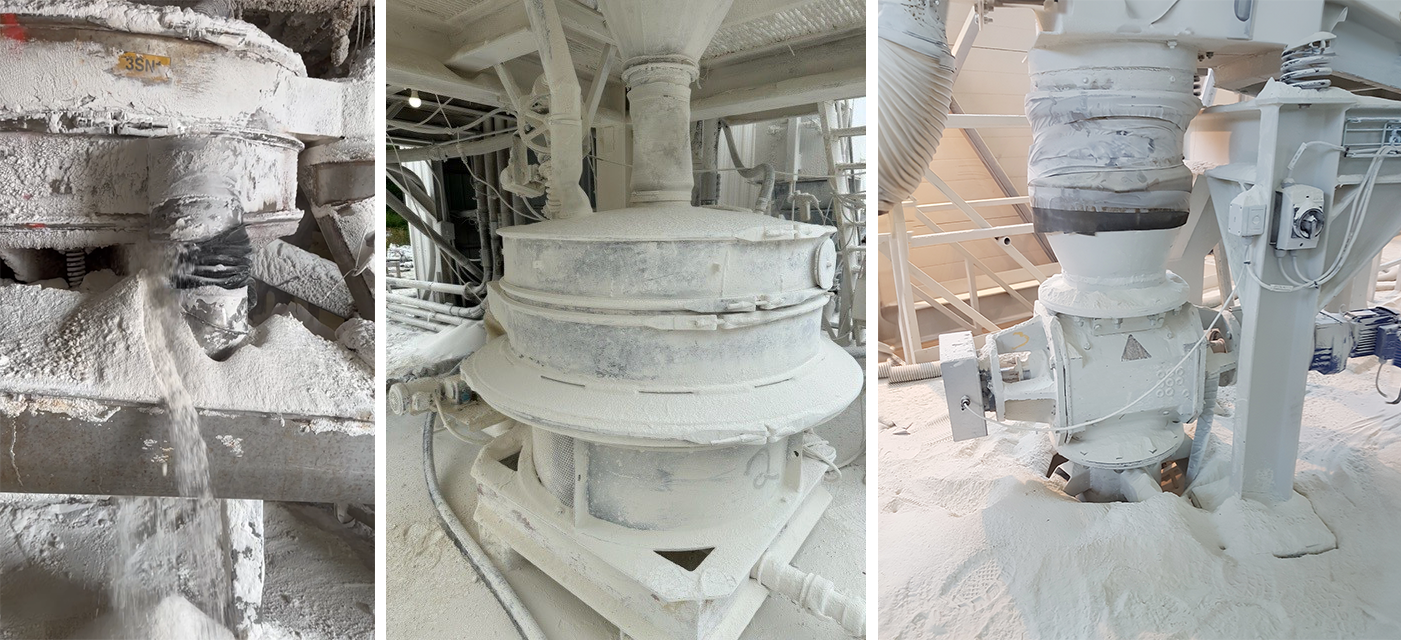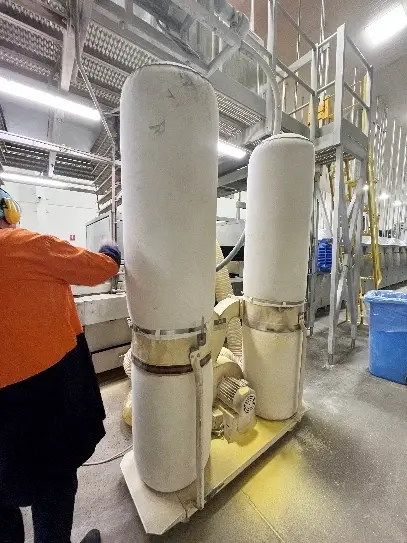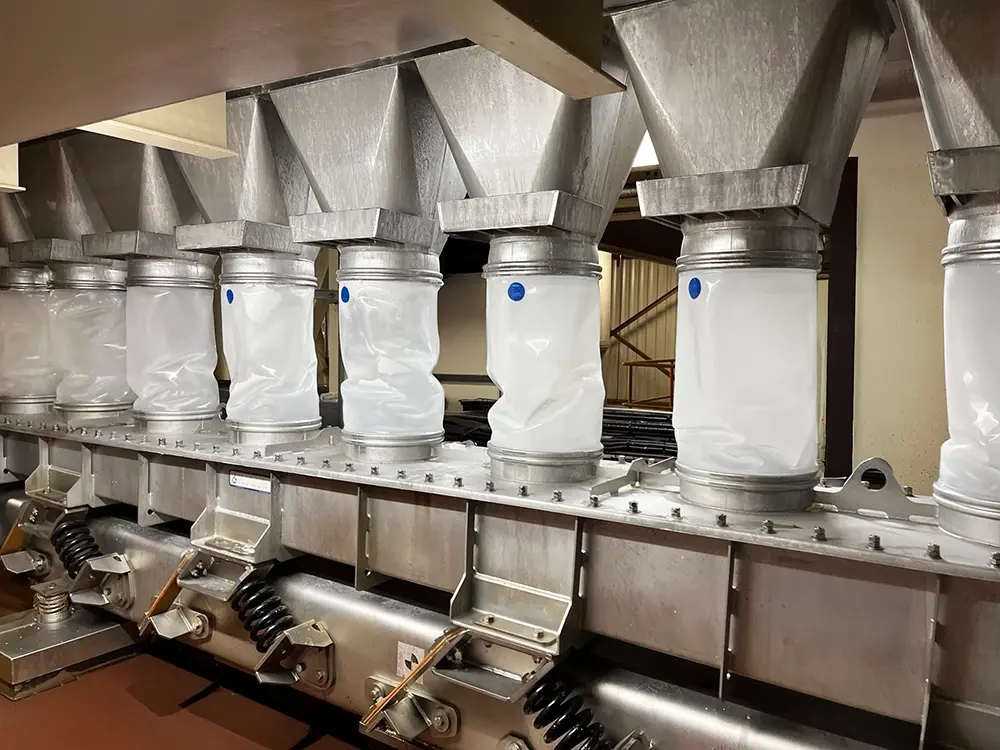In industrial manufacturing, the 'maintenance window' is a crucial period during which not only critical equipment servicing is undertaken, but process line improvements can be made without disruption to regular operations.
The timing of planned maintenance shutdowns for processing plants varies significantly, but one common factor among all maintenance shutdowns is a limited timeframe.
To ensure maximum use of the available time, strategic planning and precise execution are essential. Choosing priorities for your maintenance windows will depend on several factors, but aside from regular programmed upkeep, process efficiency improvements will always be near the top of everyone’s priority list.
Production uptime is key in every plant, so this should be the focus when assessing your process line for potential efficiency improvements during your maintenance shutdown.
Efficiency Improvement Opportunities: Look at Your Equipment Transitions
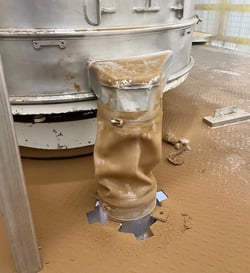 One of the most obvious places to start is wherever the most downtime is being generated, and a common location where stoppages are caused is the transition points between your equipment.
One of the most obvious places to start is wherever the most downtime is being generated, and a common location where stoppages are caused is the transition points between your equipment.
The flexible connectors at equipment transitions are often considered disposable commodities, and many believe that any cheap product will do the job. However, flexible connectors play a pivotal role in transporting your product through your processes, serving as the vital link between various equipment, such as silos, hoppers, sifters, and conveying systems.
If your flexibles fail, your production line stops.
Any unexpected stops in production due to equipment failures like this can create massive backlogs in your processing line and have a disastrous effect on your overall profitability.
So, when considering the best use of your maintenance window for efficiency improvements, upgrading your flexible connector system cannot be overlooked.
Installing Quality Flexible Connectors Provides Significant ROI Payback
Old-style, clamped sleeves have been causing headaches for production managers and maintenance managers for years as they are often the cause of factory downtime, with regular failures and leakage. They require frequent replacement due to wear or tearing, and maintenance staff often must spend considerable time adjusting clamped connectors to get optimal fitment.
That’s why the up-front price of a cheap flexible sleeve-and-clamp connection is not a true reflection of the actual cost to your business. They have a much higher lifetime cost when you consider the frequent downtime and associated cost of lost production.
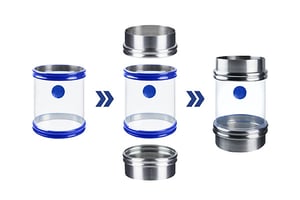 Conversely, investing in the installation of quality flexible connectors, like the BFM® fitting blue band system, will provide significant payback in a relatively short period of time. Leakage is eliminated, materials are much more durable, and changeovers can be made in seconds with no adjustments required.
Conversely, investing in the installation of quality flexible connectors, like the BFM® fitting blue band system, will provide significant payback in a relatively short period of time. Leakage is eliminated, materials are much more durable, and changeovers can be made in seconds with no adjustments required.
The Seeflex range of BFM® connectors also has the advantage of being transparent, giving maintenance staff visibility of the product flow, so if there is a blockage, they can massage the connector to get the product flowing again without having to take the time to remove it.
This is why companies all over the world are retrofitting their existing flexible connections with the patented BFM® fitting system to provide a long-term solution that provides a rapid return on investment.
Retrofitting a BFM® Flexible Connector System: Planning is Key
There are both design and time constraints that need to be considered in the process of retrofitting a BFM® system into an existing installation, but it’s a relatively simple process with the right planning.
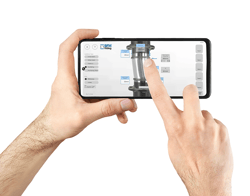 The most important part of replacing an existing connection is calculating the appropriate position for the placement of the BFM® spigots, or steel adaptors, into which the BFM® blue band connectors will be snap-fitted.
The most important part of replacing an existing connection is calculating the appropriate position for the placement of the BFM® spigots, or steel adaptors, into which the BFM® blue band connectors will be snap-fitted.
A comprehensive video outlining the measurement process to work out the correct spacing or installation gap is available here, along with a downloadable calculator to account for variables like offset alignment or horizontal movement. Pipes and spigot lengths can be adjusted accordingly in the calculator to get the perfect fit for the space available for the installation.
Most retrofitted BFM® fitting adaptor spigots are welded directly onto pipes or equipment in situ, but other options are available to help speed up the installation process.
Non-Direct-Welded Options with BFM® fittings
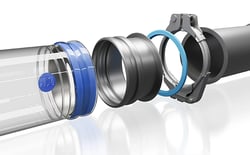 If you have a modular piping system that uses quick-release clamps, like Jacob tubing, this is the fastest installation option. BFM® fitting steel spigot adaptors are offered in a range of diameters with a pre-rolled 6mm lip that allows them to be instantly clamped onto an appropriate section of piping. This can effectively allow a BFM® fitting connection to be up and running in minutes.
If you have a modular piping system that uses quick-release clamps, like Jacob tubing, this is the fastest installation option. BFM® fitting steel spigot adaptors are offered in a range of diameters with a pre-rolled 6mm lip that allows them to be instantly clamped onto an appropriate section of piping. This can effectively allow a BFM® fitting connection to be up and running in minutes.
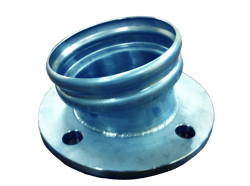 Another method is to pre-weld a BFM® fitting spigot adaptor to a ferrule or ANSI flange in the workshop prior to a shutdown so that there doesn’t need to be any in-situ welding undertaken. This will also help to speed up the installation process.
Another method is to pre-weld a BFM® fitting spigot adaptor to a ferrule or ANSI flange in the workshop prior to a shutdown so that there doesn’t need to be any in-situ welding undertaken. This will also help to speed up the installation process.
The most important aspect of either the direct-welded or non-direct-welded options is proper planning to ensure that the appropriate installation gap is observed when calculating the final positioning of the spigots to get the maximum performance from the BFM® fitting connector being used.
Connecting Non-circular Piping or Have an Aggressive Product Flow?
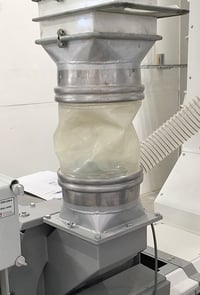 It’s not unusual to see non-circular inlets or outlets that need to be connected, and there are many examples of simple pipe adaptations, like square to round flanges, that can be prefabricated to help speed up installation during time-limited maintenance windows.
It’s not unusual to see non-circular inlets or outlets that need to be connected, and there are many examples of simple pipe adaptations, like square to round flanges, that can be prefabricated to help speed up installation during time-limited maintenance windows.
There are also simple flow-correction modification plates that can be installed to redirect the product away from the connector walls if you have a particularly abrasive and/or high-velocity product. BFM® fitting’s Authorized Distributors can provide recommendations and assist with the specific design of these for your needs.
With some well-considered design and planning, retrofitting a BFM® fitting connector system can easily be undertaken in your regular maintenance shutdown cycle and will deliver substantial long-term productivity benefits.
It’s an investment that will save your plant thousands in years to come.
For more information on retrofitting a BFM® fitting system, contact your local Authorized BFM® fitting Distributor.

